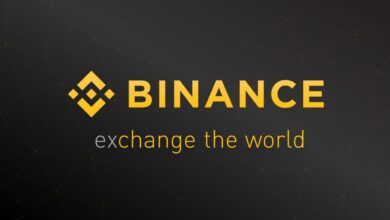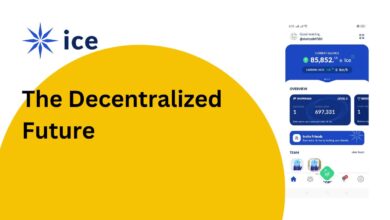What is Web3 Wallet? Discover the Power of Web3 Wallets in 2024

In the ever-evolving landscape of digital technology, Web3 wallets have emerged as a revolutionary concept, reshaping how we perceive and interact with cryptocurrencies. To truly understand Web3 wallets, we must first grasp the underlying technology: blockchain.
Table of Contents
Understanding Blockchain Technology
Blockchain technology, a revolutionary concept reshaping the digital landscape, stands at the forefront of innovation. At its core, it is a decentralized, distributed ledger system, transforming the way we perceive and conduct transactions. Unlike traditional centralized systems, blockchain operates on a network of computers, known as nodes, ensuring transparency, security, and immutability of data.
The fundamental principle of blockchain lies in its ability to create a chain of blocks, each containing a list of transactions. These blocks are linked together cryptographically, forming a chronological and unalterable chain. What makes blockchain remarkable is its consensus mechanism; transactions are verified and added to the ledger through consensus algorithms, eliminating the need for intermediaries like banks.
This technology finds application far beyond cryptocurrencies like Bitcoin and Ethereum. It promises revolutionary changes across diverse sectors, including finance, healthcare, supply chain management, and even governance. Smart contracts, self-executing agreements with coded terms, further enhance blockchain’s utility, automating processes and ensuring contractual integrity.
Blockchain fosters a trustless environment, where parties can engage in secure transactions without relying on a central authority. Its potential to democratize data and empower individuals is unparalleled, making it a cornerstone of the digital future. Understanding blockchain is not just essential; it is pivotal in navigating the evolving landscape of technology and its transformative impact on society and commerce.

Evolution from Web1 to Web3
The transition from Web1 to Web3 signifies a paradigm shift. Web1 was static and read-only, while Web2 introduced interactivity and user-generated content. Web3, powered by blockchain technology, emphasizes decentralization, enabling peer-to-peer transactions without intermediaries.
What Sets Web3 Wallets Apart
Web3 wallets, unlike traditional wallets, empower users with complete control over their funds. These wallets are decentralized, meaning users have private keys, granting access to their assets. Security and ownership are paramount in the world of Web3 wallets.
How Web3 Wallet Ensure Security
Web3 wallets utilize cryptographic techniques to secure transactions and private keys. Through a combination of public and private keys, users can engage in secure transactions, eliminating the risks associated with centralized control.
Popular Web3 Wallets in the Market
Prominent Web3 wallets like MetaMask, Trust Wallet, and MyEtherWallet have gained widespread adoption. MetaMask, a browser extension, allows seamless interaction with decentralized applications (dApps), while Trust Wallet offers mobile convenience, MyEtherWallet provides an intuitive interface for Ethereum users and Binance is the world’s leading cryptocurrency exchange and Wallet.
For more details follow link: Binance: A Comprehensive Guide to the World’s Leading Cryptocurrency Exchange

Benefits of Using Web3 Wallets
Web3 wallets, designed for the decentralized internet era, offer a myriad of advantages to users navigating the blockchain ecosystem. First and foremost, these wallets prioritize security, utilizing advanced encryption and private keys to safeguard digital assets. Unlike traditional wallets, Web3 wallets operate on a decentralized network, granting users full control over their funds without relying on intermediaries.
One of the key benefits lies in their compatibility with various cryptocurrencies and decentralized applications (dApps). Users can seamlessly manage multiple cryptocurrencies and interact with diverse dApps from a single interface, streamlining the user experience. Additionally, Web3 wallets enhance privacy, enabling pseudonymous transactions that do not require personal information.
Moreover, these wallets promote financial inclusivity, allowing individuals worldwide, even those without access to traditional banking, to participate in the global economy. With the advent of blockchain technology, transactions are faster and more cost-effective, eliminating lengthy processing times associated with traditional financial systems.
In essence, Web3 wallets empower users with unparalleled control, security, and accessibility, making them indispensable tools for anyone engaging in the decentralized digital landscape.
Challenges and Concerns
Despite their advantages, Web3 wallets face challenges such as user experience, scalability, and regulatory concerns. Overcoming these hurdles is crucial for mainstream adoption, prompting ongoing developments in the Web3 space.
Web3 Wallets and Decentralized Finance (DeFi)
Web3 wallets are integral to the DeFi landscape, enabling users to lend, borrow, and trade assets without intermediaries. Decentralized lending platforms like Compound and Aave rely on Web3 wallets, democratizing access to financial services globally.
Integration of NFTs with Web3 Wallets
Non-Fungible Tokens (NFTs), unique digital assets representing ownership of art, collectibles, and more, have gained prominence. Web3 wallets facilitate NFT transactions, allowing users to showcase, buy, and sell digital art in a secure and transparent environment.
Future Trends in Web3 Wallet Development
The future of Web3 wallets holds exciting possibilities, including improved user interfaces, cross-chain compatibility, and enhanced security features. Interoperability between different blockchain networks is a key focus, enabling seamless asset transfers and interactions.
Steps to Choose the Right Web3 Wallet
Selecting an appropriate Web3 wallet involves evaluating factors like security features, supported cryptocurrencies, user experience, and community trust. Researching and comparing options based on individual needs ensures a tailored and secure experience.
Comparing Web3 Wallets for Different Blockchains
Different blockchains offer unique Web3 wallets tailored to their ecosystems. Ethereum-based wallets like MetaMask cater to Ether and ERC-20 tokens, while Binance Smart Chain wallets like Trust Wallet optimize transactions within the Binance network. Choosing the right blockchain-compatible wallet is essential for smooth operations.
Web3 Wallets and Digital Identity
In the digital age, where personal data is both precious and vulnerable, Web3 wallets emerge as guardians of individual digital identities. These wallets, designed for the decentralized web, play a pivotal role in ensuring user privacy and security. Unlike conventional systems, Web3 wallets allow users to manage their digital identities autonomously, offering a self-sovereign identity solution.
With Web3 wallets, users can control the release of their personal information, sharing only what’s necessary for specific transactions or interactions. This empowerment mitigates the risks associated with centralized databases and reduces the likelihood of identity theft and fraud. Furthermore, Web3 wallets use advanced cryptographic techniques, providing a secure environment where users can verify their identity without revealing sensitive details.
In the evolving landscape of the internet, where data breaches and privacy concerns are rampant, Web3 wallets stand as a beacon of trust. They not only facilitate seamless, borderless transactions but also safeguard the essence of one’s digital presence, emphasizing the fundamental principle of user empowerment and data sovereignty in the digital realm.
Conclusion:
In conclusion, Web3 wallets represent a groundbreaking fusion of blockchain technology and digital finance. Their decentralized nature, coupled with enhanced security and user control, positions them as the cornerstone of the digital future. As the world transitions towards decentralized systems, Web3 wallets will play a pivotal role in shaping the future of finance and online interactions.
Frequently Asked Questions (FAQs)
Q1: What is the significance of Web3 wallets in the context of blockchain technology?
A1: Web3 wallets empower users with complete control over their digital assets, ensuring security and ownership in the decentralized world of cryptocurrencies.
Q2: Can Web3 wallets be used for transactions other than cryptocurrencies?
A2: Yes, Web3 wallets can facilitate transactions for various digital assets, including NFTs, tokens, and other blockchain-based assets.
Q3: How do Web3 wallets enhance user privacy and security?
A3: Web3 wallets use advanced cryptographic techniques and private keys to secure transactions, providing users with enhanced privacy and security features.
Q4: What challenges do Web3 wallets face in terms of mainstream adoption?
A4: Challenges such as user experience, scalability, and regulatory concerns pose hurdles for mainstream Web3 wallet adoption, driving ongoing innovations in the space.
Q5: How can individuals ensure the safety of their Web3 wallet assets?
A5: Users should prioritize strong passwords, enable two-factor authentication, and keep their private keys secure to safeguard their Web3 wallet assets.


